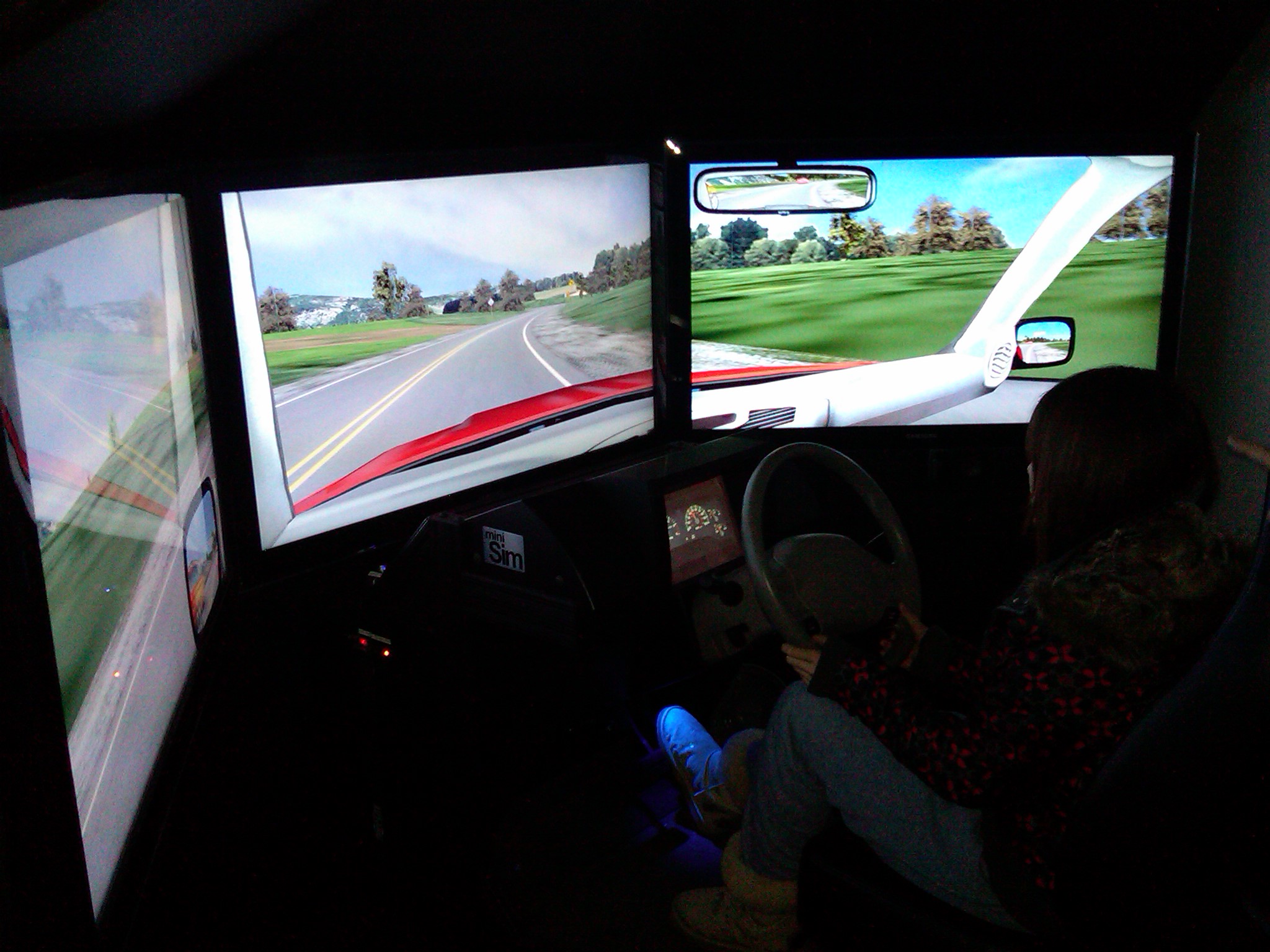The Center for Transportation Research and Education (CTRE) at the Institute for Transportation (InTrans) is helping to make the roads safer with the “MiniCym,” a quarter-cab driver simulator.
“This is a tool that will help us explore new areas of researched related to road safety and human factors,” said Shashi Nambisan, professor of civil, construction and environmental engineering (CCEE) and director of InTrans.
 The MiniCym is contained in a trailer that features three LCD screens and a real vehicle seat, with a column gear shifter and acceleration and brake pedals. The device features real-time driving simulations that allow the “driver” to react and respond to various obstacles and hazards. It is used to test various driving situations and road designs without the fear of damage or injury.
The MiniCym is contained in a trailer that features three LCD screens and a real vehicle seat, with a column gear shifter and acceleration and brake pedals. The device features real-time driving simulations that allow the “driver” to react and respond to various obstacles and hazards. It is used to test various driving situations and road designs without the fear of damage or injury.
“The driving simulator can test innovative highway designs including J-Turns at high speed expressway intersections and roundabouts before the designs are built,” said Reginald Souleyrette, Gerald and Audrey Olson professor of CCEE and associate director of CTRE.
InTrans engineers believe the MiniCym will be a valuable outreach tool to various local groups because of its portability.
“The MiniCym can easily be brought to different types of public meetings relating to traffic safety, field offices for the DOT, and even be used for driving safety in K-12 outreach programs,” said Souleyrette.
“We are also looking at how we can incorporate studies about distracted drivers and the danger of driving while texting into the MiniCym,” he added.
In the future, the MiniCym will be able to branch into new areas of research to test other factors related to driving including motorcycle safety.
 “We can discover many different factors (using the MiniCym) from crash data that would otherwise be impossible. We are also looking at different aspects that can make motorcycles more visible on the road including the types of helmet, gear, and clothing color,” said Nadia Gkritza, an assistant professor of CCEE and chair of the Graduate Transportation Program at InTrans.
“We can discover many different factors (using the MiniCym) from crash data that would otherwise be impossible. We are also looking at different aspects that can make motorcycles more visible on the road including the types of helmet, gear, and clothing color,” said Nadia Gkritza, an assistant professor of CCEE and chair of the Graduate Transportation Program at InTrans.
The MiniCym has been a collaboration between Iowa State, who envisioned this particular application of the driver simulator, and the University of Iowa, who designed and built the MiniSim. (Souleyrette says his spelling, MiniCym, is a good-natured poke at the U of I and says he’ll change the name back if UI legal folks come calling).
“We have been working with Andy Veit, who built the simulator, and Shawn Allen, who programmed the environments for the driving simulations,” said Souleyrette. “Working with the University of Iowa has been great and both Andy and Shawn have been fantastic to work with.”
Other partners working with CTRE and InTrans on the MiniCym include Iowa State University’s Department of Civil, Construction and Environmental Engineering, the Human Computer Interaction (HCI) program at Iowa State, the National Advanced Driving Simulator (NADS) at the University of Iowa, the Midwestern Transportation Consortium (MTC), and Shauna Hallmark, the director of MTC.
To find our more information about the MiniCym or transportation safety, visit the InTrans or CTRE websites.
